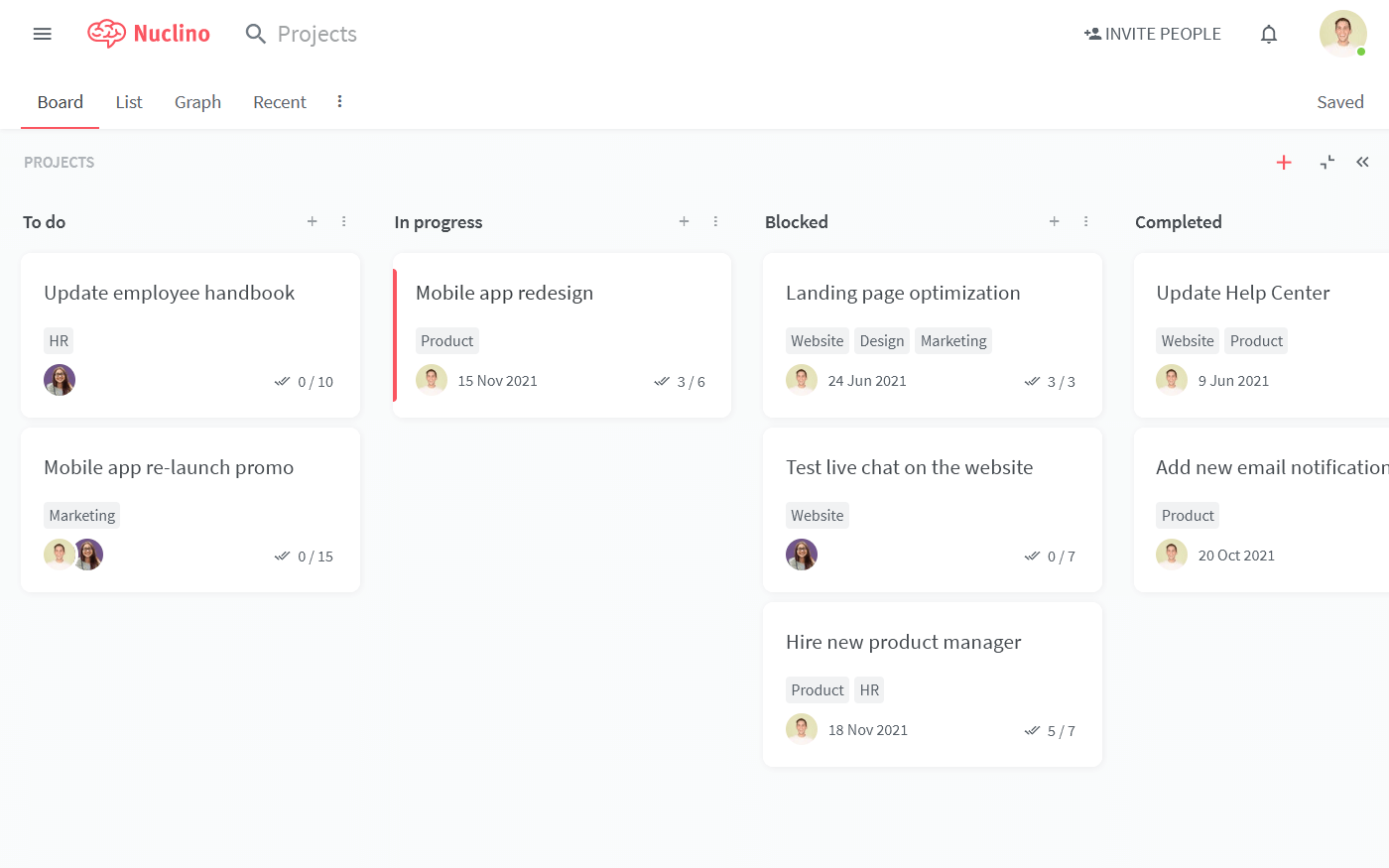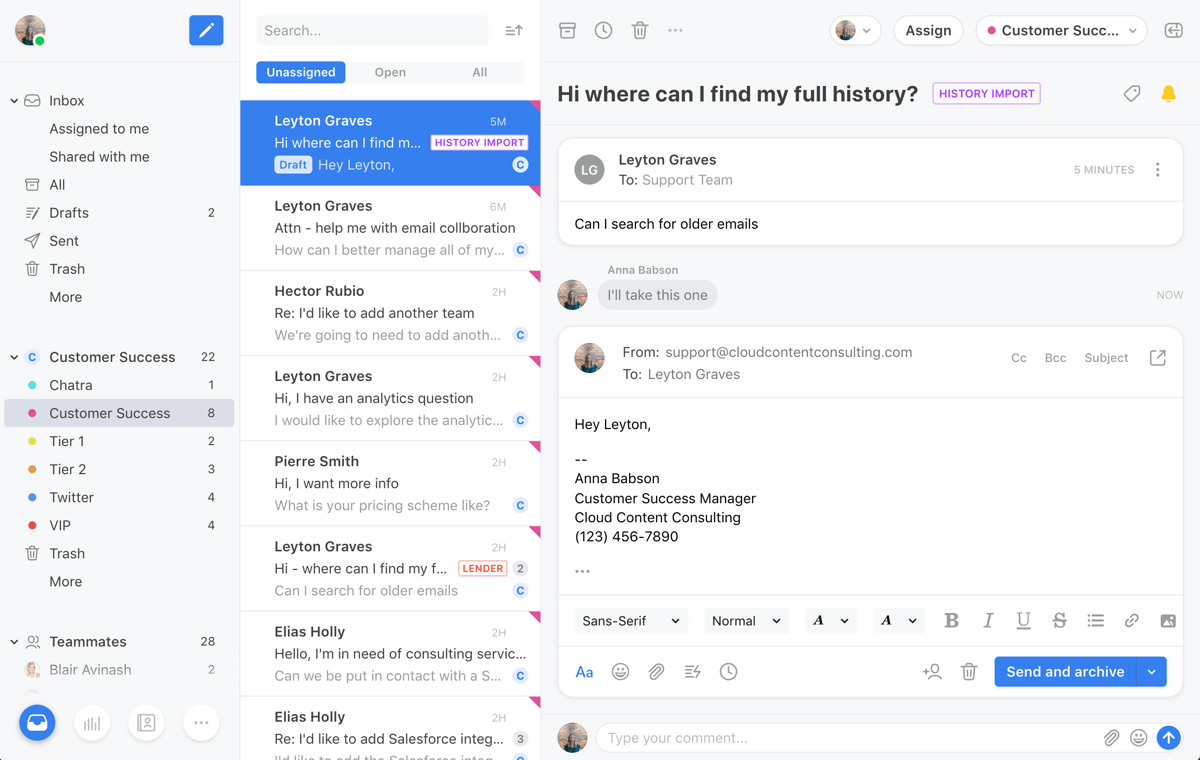Best Online Collaboration Tools for Teams in 2025
Empower your team with the right collaboration software.
As remote work is solidifying its status as the new default, finding the right online collaboration tools for your team is becoming increasingly important.
There is a tool for everything nowadays, but this variety often makes the choice more difficult. And since most online collaboration tools employ subscription-based pricing models, the costs can easily add up – so make your choice wisely.
We have evaluated dozens of collaboration tools and put together a list of our top picks.
The online collaboration tools every team needs
There are hundreds of online collaboration tools out there, with new ones popping up nearly every month. This list doesn't aim to cover all of them. You have better things to do than to scroll through an endless list of options, many of which are essentially carbon copies of each other.
Instead, we have put together a shortlist of top-rated collaboration tools which we personally evaluated.
Nuclino: Knowledge sharing, document collaboration, and project management
Twist: Team communication
Google Drive: File sharing
Front: Shared inbox and customer support
Google Meet: Video calling
Figma: Design collaboration
Loom: Video sharing
Miro: Online whiteboard
Zapier: Workflow automation
Nuclino: Knowledge sharing & document collaboration

Exchanging knowledge, collaborating on documents, and managing projects are vital parts of effective team collaboration. Nuclino has been painstakingly designed to make these tasks as effortless as possible. It's a unified workspace where you can bring all your team's work together and collaborate without the chaos of files and folders, context switching, or silos — as if you had a collective brain.
One notable aspect of Nuclino is its unique approach to structuring content. Instead of disconnected docs in separate folders, Nuclino allows you to link related pages together and organize your internal documentation like your own internal Wikipedia. Every document in Nuclino can be collaborated on in real time or asynchronously using comments and mentions. The easy-to-use visual editor makes it easy to anyone to contribute.

But Nuclino is more than just a document collaboration tool. The list, board, table, and graph views allow you to organize your content visually, adapting it to your workflow. Images, videos, PDFs, and other files can be embedded directly into the documents, allowing you to create a source of truth for every project and topic.

It's a great tool for knowledge sharing, sprint planning, employee onboarding and offboarding, business memos, and much more. Remote teams can use Nuclino to communicate asynchronously, cutting down on the number of time-consuming meetings.
Twist: Team communication

Chat and messaging apps are essential online collaboration tools that every team needs. While the most popular tool in that category is undoubtedly Slack, Twist has fairly earned its reputation as one of its best alternatives.
Unlike most real-time chat tools that leave you drowning in constant notifications, Twist is designed to facilitate more focused and structured communication.
Rather than sending messages one line at a time, Twist lets you engage in thoughtful long-form discussion. Topic-specific channels and threads allow you to keep all communication clearly organized and make it easy to reference in the future. The "do not disturb" mode gives you uninterrupted space to focus on your work.
Google Drive: File sharing

Being able to securely store and share files is a fundamental part of online collaboration. There are several reliable tools, the most popular of which are Google Drive, Dropbox, OneDrive, and Box. All of them offer robust, reliable solutions that could address your needs equally well.
Our own team recommends Google Drive because of its tight integration with a broader collection of Google apps that work better in tandem.
Front: Shared inbox and customer support

Front is an online collaboration tool for customer support teams. Successfully addressing customer requests is often a team effort and there are many solutions aimed to make that task easier, including Intercom, Groove, Zendesk, and more.
Our own team prefers Front because unlike most alternatives, it's fast and lightweight. It's easy to set up and customize, allowing you to manage emails, support tickets, live chats, and more in one collaborative inbox.
Google Meet: Video calling

Meetings are a staple of business life. While it's wise to try and minimize the time your team spends in meetings, in some cases, a face-to-face discussion is the fastest path towards a solution.
These days, as distributed and remote teams are becoming increasingly common, more and more meetings take place online. This makes video conferencing and screen-sharing solutions such as Google Meet (or many of its alternatives, including Zoom, Skype, GoToMeeting, and more) an integral part of any team's toolset.
Figma: Design collaboration

Figma is an online collaboration tool built specifically for designers and marketers. Not only is it a great solution for creating mockups, wireframes, and animated prototypes, its built-in collaboration features allow your team to exchange feedback in real time, directly in the tool.
Not having to jump back and forth between email, Slack, and your design tool helps significantly speed up the process between wireframes and ready-to-code design.
Loom: Video sharing

Loom is a unique online collaboration tool. While most teams communicate either synchronously (through face-to-face meetings or calls), or asynchronously (through emails and shared documents), Loom unifies the best of both worlds.
With Loom, you can record video messages and share them with your team, so they can watch them when they are ready. Along with a video of yourself, you can record your screen, add notes and highlights, and share your message in context. It's great for presentations, team updates, tutorials, and much more.
Miro: Online whiteboard

Miro is your team's virtual whiteboard – a flexible digital canvas that makes it easy to brainstorm and collaborate visually. It's suitable for both, real-time and asynchronous teamwork, and can be a great tool for making your virtual meetings more engaging.
Miro shines as a remote work tool and supports a wide variety of use cases, including diagramming, mind-mapping, sprint planning, moodboards, and much more. Anything you can do with a real whiteboard, you can just as easily do with Miro.
Looking for more tools similar to Miro? Check out this list of Miro alternatives.
Zapier: Workflow automation

Now, this already sounds like a very long list of tools. Keeping track of all of them may seem like a full-time job in itself. If you feel that the number of your team's collaboration tools is starting to get out of hand (but don't want to give up any of them), there may be a solution for you.
Zapier was designed to connect your tools together and automate the tasks between them. Received an email with an attachment? Zapier can automatically save it to Dropbox and send you a Slack notification that a new Dropbox file has been added.
Zappier works with more than 2,000 different apps, allowing you to build whatever workflows you want, with just a few clicks.
Which online collaboration tools to pick
Are all the tools on this list absolutely necessary for effective online collaboration? Certainly not. Depending on your team size, industry, and company culture, some tools may be more or less useful than others. Smaller teams usually don't need dedicated tools for every task, while larger teams depend on them for keeping their work organized.
What's important is to evaluate each and every tool in the context of your unique workflow. No matter how well a tool is designed, it will only add value if it fits well into your team's natural way of working. Make sure to do an extensive field test before adopting any new collaboration tool. If you see that it makes your team members' jobs easier, it's a worthwhile investment.
Ready to get started?
